Traditional renaissance art is a genre that was created with a central focus on European history, religion and identity which was mainly if not entirely centred around whiteness. However upon our recent discovery of the Atlanta based visual artist Osaze Akil’s work, we found ourselves moved by his method of re-framing some of these traditionally white narratives to include black identities, while also offering contemporary takes on themes of black divinity with influences from African cultures spirituality and fashion. His work speaks volumes in such a way where it uses different elements and smaller details that ultimately come together to tell stories that speak proudly to both modern & traditional black heritage and culture. Which is why Twin chose to sit down with the artist himself to gain a more accurate idea of the process, inspirations and aspirations behind his work.
Tell me about your journey, how did you first start painting ?
I’ve been painting for most of my life. As a child, my mother painted leisurely so I think I picked that up from her. I started painting for myself when I was about six or seven, but I was drawing and sketching well before that. I had all of these ideas and ways that I saw and interpreted the world, and putting them on canvas always felt like a sweet release. If I didn’t have the language [verbally], I had the language to express myself through the art I created.
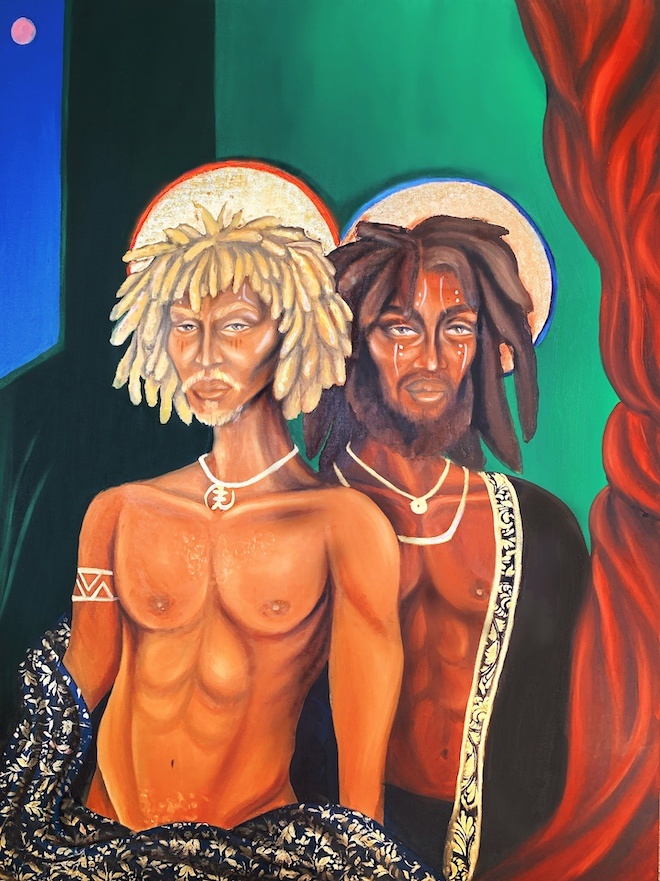
What or who would you say is your biggest influence/s?
I have major influences that all contribute to my art in different ways. The first would be Toni Morrison. She’s one of my favorite authors and I’ve always been drawn to the mysticism that she alludes to in her work. The idea that black people have a sort of magic, that isn’t self contained, but shared and experienced communally was always something that intrigued me. With my paintings, I definitely want them to feel magical- that there’s an inherent magic that isn’t forced, but still felt by anyone looking at the piece. Another big influence of mine is Axel Vervoordt.
He is an interior designer and art collector, and often references the energy of a space or of an object being transformative. For me, I think of “spaces” more metaphorically. I think about the spaces that black people have been provided, and have been made by us for ourselves, and how they hold the weight that they do because of the energy that we’ve brought into them. Most of the subjects in my paintings are indoors, or enclosed in some sense, which reinforces my idea of us bringing our magic and our energy into the confines of our reality and making it work for us. We’re often put in boxes, and yet we make them beautiful, exciting, and influential.
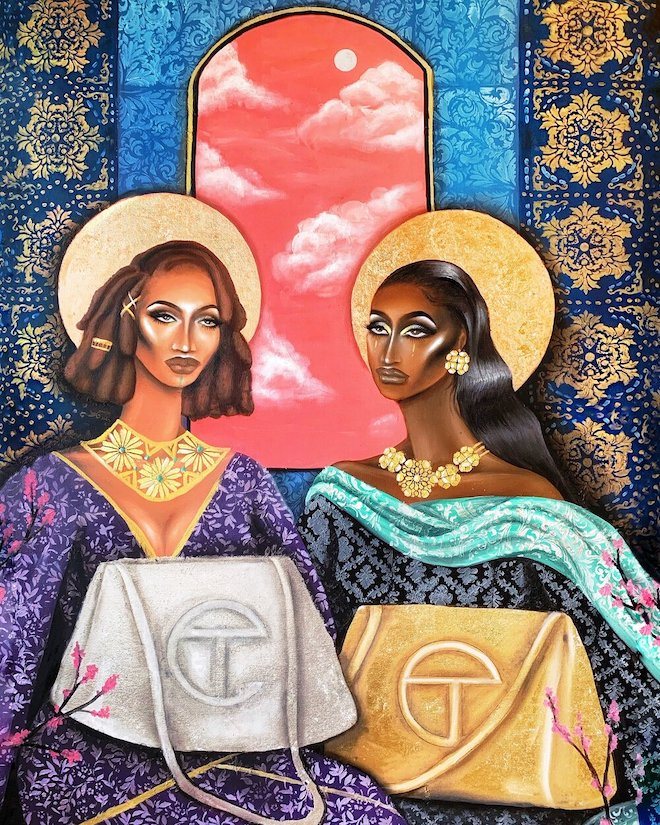
A lot of your work in many ways feel quite sacred, with some even holding biblical titles , what part does religion or spirituality play in your process ?
I grew up in church. Although I don’t consider myself to be a fundamentalist, I’ve always felt that I am guided, protected, and supported by something much larger than myself. My belief in God is a core part of my identity, if not the most important. I feel that God has given me a gift, which is my talent, and I honor that by referencing God’s work through me in my pieces. Painting has become not only a meditative practice for me but a form of worship. I also often reflect on the importance that spirituality has held in my culture, as an African American. Since slavery, our connection to God and the way that we worship has been the foundation for a lot of ways that we operate today, intraculturally and with the world in general.
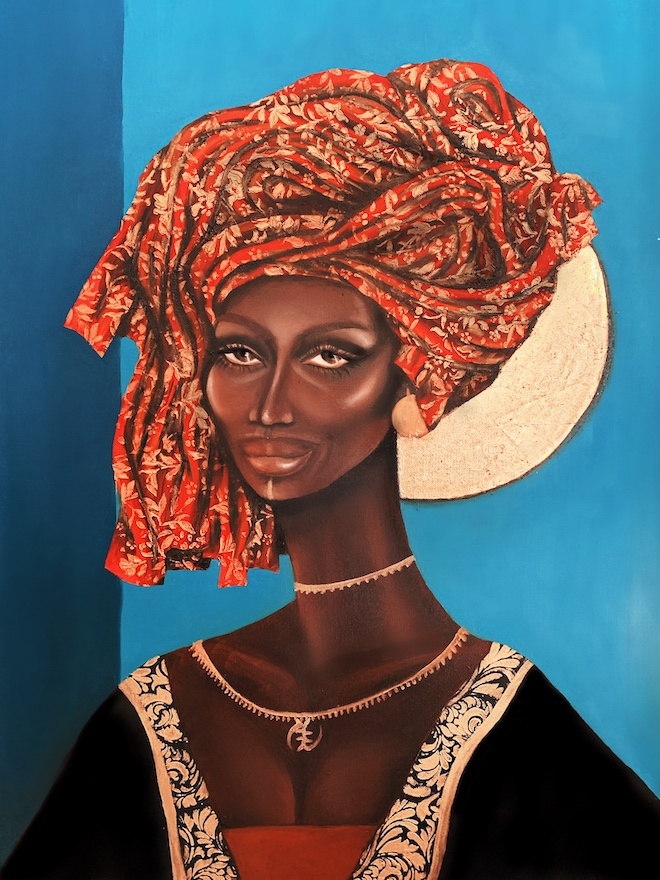
As a contemporary artist, what role would you like your work to play in modern day society ?
I feel that I’m rewriting history, and telling a new story. When walking through art museums as a child, I never saw depictions of black people being exalted, significant, worthy of comfort, or abundance. I feel that had I seen more of that growing up, I wouldn’t have lived thinking that so many positive things that we can get from life could only be afforded to me if I wasn’t who I was. I want those younger than me to have that representation, and to know that even though our past in this country started in bondage, our future can be free.
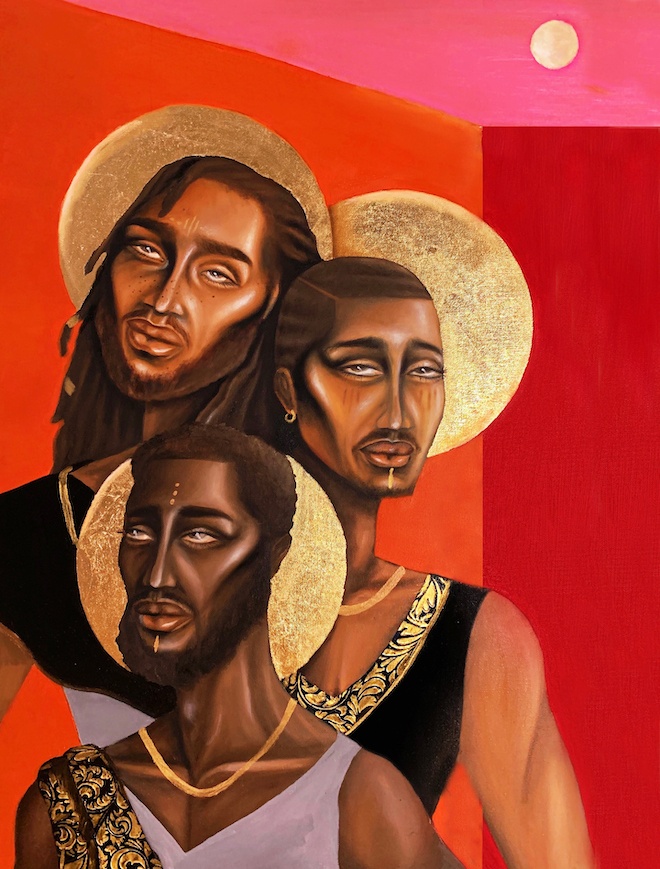
What’s the part of your process that you find most exciting?
I love when I first get an idea, and I do the pre-sketch. I sketch out my paintings on paper about 4-5 times before I actually put anything on canvas. Going through that process, being introspective, and understanding what I want to say through it is very gratifying. Also, the end when it’s completed is also a very exciting feeling.
Do you have a favourite piece of yours?
I don’t think I’ve yet made my favorite piece. If I had to choose, it would be my “Madonna and Child” piece. We haven’t seen many depictions of Christ or the Virgin Mary as anything other than white. So, challenging that felt important to me.
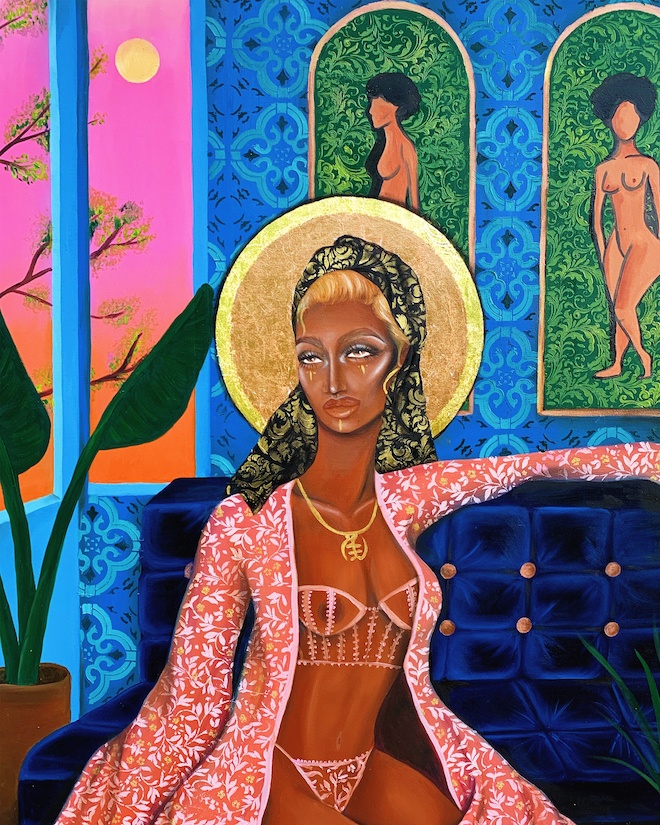
How was your lockdown experience? Did you find yourself more or less inspired?
I am definitely more inspired in lockdown than before. Before, there were so many distractions and interactions that I had on a daily basis that took my mind away from creating. Now, I’m forced to sit with myself, learn new things, and focus on things in different ways which automatically sparks inspiration.
Where can one purchase your work ?
My work can be purchased on my website! osazeakil.com

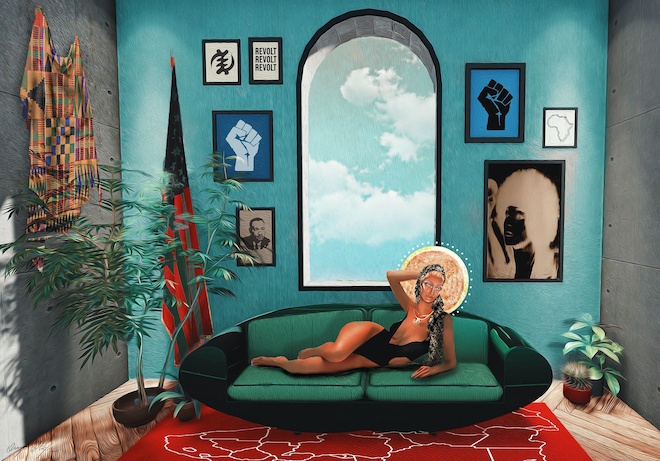
 PREVIOUS
PREVIOUS

 Twitter
Twitter
 Tumblr
Tumblr
 YouTube
YouTube
 Facebook
Facebook
 Instagram
Instagram
